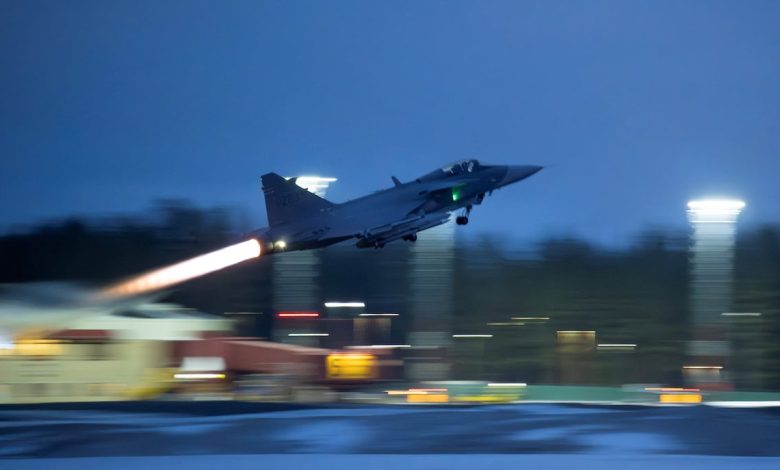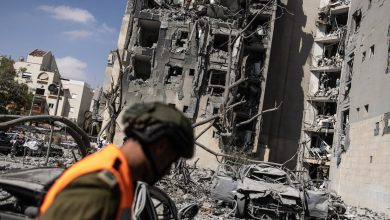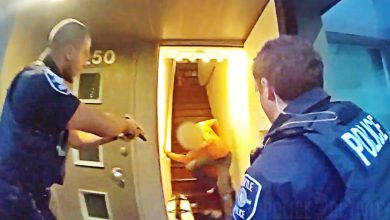Saab, Kongsberg again post record years on European defense splurge

PARIS — Saab and Kongsberg kicked off the European defense industry earnings season Friday, posting another year of record sales growth and orders in 2024, as governments across the continent continue to ramp up military spending in the face of Russian aggression.
Sweden’s Saab, the maker of the Gripen fighter jet and the Carl-Gustaf recoilless rifle, reported orders jumped 24% to 96.8 billion Swedish kronor (US$8.9 billion) last year, raising the backlog to a record 187 billion kronor. Orders included Gripens for Hungary, radar systems, air defense, GlobalEye surveillance planes and a record order from Poland for the Carl-Gustaf.
Defense and aerospace orders at Norway’s Kongsberg jumped 44% to 54.4 billion Norwegian kroner ($4.85 billion) in 2024, boosted by the company’s largest-ever missile order from the U.S. Navy, and a Dutch purchase of air-defense batteries. The order book in defense and aerospace jumped to 101 billion kroner at the end of December, up 54% from a year earlier.
Finland’s Patria reported orders jumped 33% to €1.26 billion in 2024, lifted by demand for the company’s 6-wheeled armored vehicles, for a backlog of €2.38 billion by the end of December. Kongsberg owns 49.9% of the company, with the Finnish government owning the remainder.
Global military spending has been surging in a context of deteriorating peace and security, with spending in 2023 rising for a ninth year to $2.44 trillion, according to the latest annual data from the Stockholm International Peace Research Institute. Europe is one of the regions with the biggest increase in defense outlays, following Russia’s invasion of Ukraine in 2022.
“There are tensions and stuff like that, which makes it an unusually difficult time to predict what’s going to happen going forward, but we see a strong continued need for defense capabilities definitely, and a strong market going forward,” Saab CEO Micael Johansson said in a call Friday.
The Saab CEO sees defense spending in Europe rising regardless of decisions regarding the NATO alliance and joint European programs. The NATO summit in The Hague in June will be “very interesting to see where the ambition level will be put when it comes to targets,” Johansson said.
NATO alliance members including the U.S., U.K. and Poland say the alliance target to spend at least 2% of GDP on defense is not enough, and the summit is expected to set a higher threshold. Defense spending by European Union countries was expected to reach a record €326 billion in 2024, from €279 billion a year earlier, the European Defence Agency reported in December.
International business now accounts for 72% of the backlog at Saab, from 64% a year earlier, according to CFO Anna Wijkander. At Kongsberg, the defense and aerospace order book was padded by deals with the U.S. Navy and the Netherlands, and air-defense systems for Lithuania.
“Given the current situation, it is likely that NATO countries and Norway’s allies will continue to invest in and strengthen their defense capabilities,” Kongsberg said. “There is a high demand for Kongsberg Defence & Aerospace’s core products such as air defense, missiles, and weapon stations.”
Kongsberg said it will start construction of missile factories in the U.S. and Australia in 2025, and position itself for Norway’s upcoming renewal of its frigate fleet.
Regarding future business at Saab, the company is negotiating a Gripen contract with Thailand, and has interest for the fighter from Colombia and Peru, according to Johansson, who also mentioned additional Gripens for Brazil.
The company is campaigning to sell its GlobalEye surveillance aircraft in the Nordic region, southern Europe, Asia and the Middle East, and is also trying to get NATO interested in the GlobalEye, as the Boeing E-3 is “more and more going into a difficult phase” regarding availability, according to the CEO. The fleet of E-3 aircraft operated by the U.S. Air Force failed to meet availability targets in any of the 11 years through to 2020, according to a report by the U.S. Government Accountability Office in November 2022.
Saab has a team of more than 100 people working on the future fighter concept, including unmanned capability, which Johansson said he expects to be the next step to complement the Gripen going forward. France in October kicked of development of an unmanned wingman drone for the competing Rafale fighter.
“Of course over time, in the 2050s, we need to have a new solution for a possible manned fighter,” the Saab CEO said. “We will fly a number of systems over the next few years, which will be unmanned to start with.”
Johansson said margins in Saab’s aeronautics business are being affected by delays to starting up the T-7 Red Hawk jet trainer program in the U.S., which he said will take “another couple of years before we sort of see that turning around.”
“We’re a bit dependent on when the U.S. Air Force will contract Boeing to really start ramping up production,” the CEO said. “There will be production ongoing, but on a rather low level, until the testing is done with Air Force, and Boeing gets the contracts.”
Rudy Ruitenberg is a Europe correspondent for Defense News. He started his career at Bloomberg News and has experience reporting on technology, commodity markets and politics.







